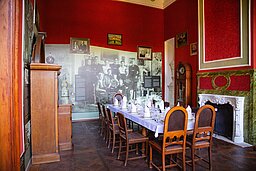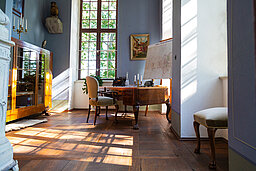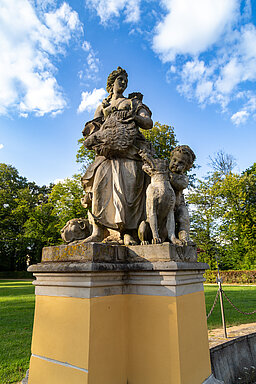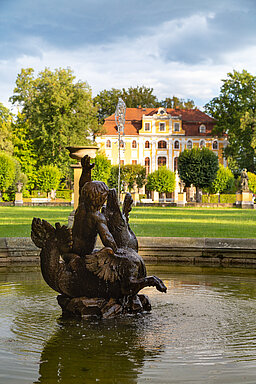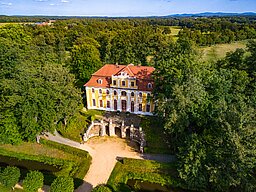

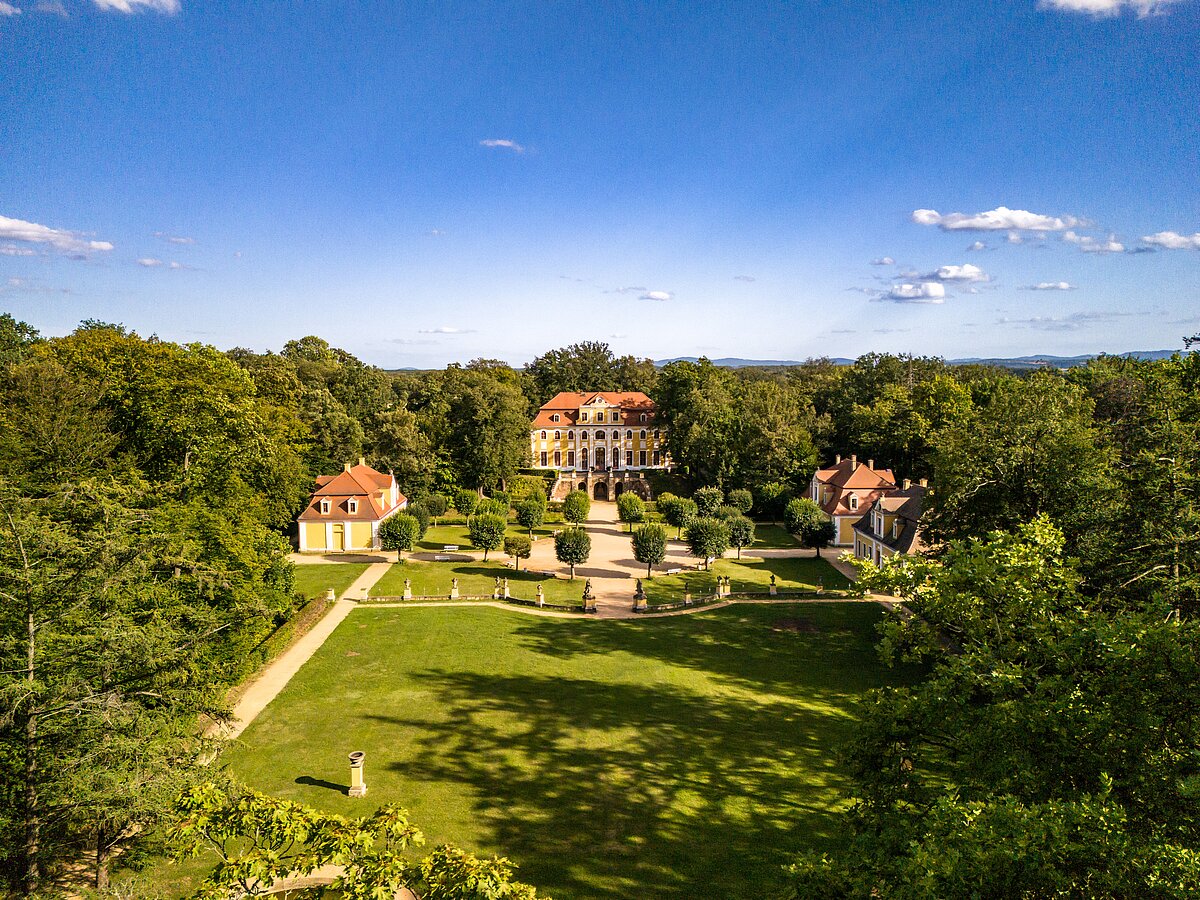
Nestled in one of the most valuable gardens in Saxony, the baroque Neschwitz Castle is hidden on the edge of the UNESCO biosphere reserve “Oberlausitzer Heide- und Teichlandschaft” northwest of Bautzen. It was built in 1723 on the cellar vaults of an old moated castle and today serves as a registry office, concert hall and exhibition space. Since the 18th century, the French-style baroque garden and the later English landscape garden have formed a complete work of art.
Guided tours by appointment
By car: Take the B6 towards Bautzen and turn off in Kittlitz. Follow the signs to Kittlitz Castle.
Public transportation: Take a train to Bautzen. From there, take a bus or cab to Kittlitz.
The small German-Sorbian community of Neschwitz to the north-west of Bautzen has a population of just 2,400. And if it weren't for the signs on the main road, hardly anyone would suspect that a jewel of Baroque architecture is hidden here, on the edge of the Unesco biosphere reserve “Upper Lusatian Heath and Pond Landscape”. Built between 1721 and 1723 by Duke Friedrich Ludwig von Württemberg on the vaulted cellar of an old moated castle, the baroque Neschwitz Castle today attracts visitors not only from Germany, who are enchanted by the beauty of the place. The building, which has been preserved in its original state, lies in the middle of a 10-hectare park that combines the austerity of baroque garden design with the wild romance of an English landscape garden. It is one of the most beautiful and valuable gardens in Saxony.
This cultural-historical and scenic work of art goes back to its later owner, the court banker Wolfgang Freiherr von Riesch, who commissioned the architect Friedrich August Krubsacius to extend the gardens in the mid-18th century. A “New Palace” built by him fell victim to a fire in 1945, as did a collection of orange and lemon trees, and was never rebuilt.
The fountains and numerous sandstone sculptures, some of which are larger than life, have been preserved and are spread across the French part of the park. They depict figures from Greek mythology, such as the virgin huntress Atalante and her lover Meleager. Three of the four pavilions grouped around the 35-metre traffic circle in the center of the park have also been lovingly restored. One of them, the former men's pavilion, now houses the “Saxon Bird Protection Observatory”, which provides information about bird protection in Saxony with an interactive exhibition. It was founded in the 1930s by the last owner of the baroque Neschwitz Castle, the forestry scientist and bird researcher Arnold Oskar Conrad Harry Freiherr von Vietinghoff-Riesch. The exhibition “Lebenswege - Zeitenwende” is dedicated to him and his family in the castle. There are also changing exhibitions on the castle and local history, concerts are regularly performed in the large hall of the baroque building and couples can say “I do” in the magnificent ambience of the castle.
